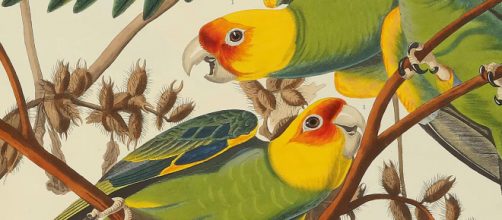The Audubon Naturalist Society (ANS) gives itself a new name that does not honor the memory of slave-owning artist John James Audubon. An announcement of the change appears on the organization's website. The statement explains how the new name will be chosen, adding that suggestions from the public will be considered.
The Guardian noted that the ANS was a regional organization operating bird sanctuaries in Washington DC, Maryland, and Virginia. The ANS had no ties to the National Audubon Society (audubon.org), a more extensive nationwide organization, the newspaper said.
The Guardian pointed out that the National Audubon Society had previously acknowledged the artist's history without bringing up any plans to adopt a new name.
'We need all nature lovers'
In announcing the name change, the ANS said that honoring Audubon's memory while ignoring the pain he had caused to African Americans was "a disservice to our community." The ANS noted that a new name would help the organization enter "a stronger, more inclusive future."
"We will change our name to one that better reflects the growing, rich diversity of the region that we serve and sends a clear message now and in the future: Nature needs all of us," the announcement said. The ANS said it had become aware of the need to increase inclusion in 2010.
"We recognized we need all nature lovers onboard to make real progress in protecting our precious environment," the organization said.
Owning and selling slaves
Audubon had been born in Haiti but moved to the U.S. before dying in 1851. HuffPost recalled that he had owned slaves and sold slaves in the 1820s. At one point, Audubon had shipped five human skulls to Samuel Morton, a doctor in search of scientific evidence to bolster a theory about races having different levels of intellectual ability.
The artist had opposed efforts to end slavery and had expressed a belief in white intellectual supremacy.
Audubon's artistic influence
In preparation for a 2019 auction of Audubon's work, Sotheby's prepared a video of Selby Kiffer explaining the importance of the artist's paintings. Kiffer said Audubon had gone to great lengths to show birds in their natural environment at a time when other artists were basing their depictions of birds on the work of taxidermists.
After Audubon, "no Natural History artists could ever go back to the old model of working in museums with taxidermic specimens. Artists had to go out into the field," Kiffer said. Furthermore, Audubon decided to publish books containing life-size images of every species of bird found in the United States, Kiffer recalled.


